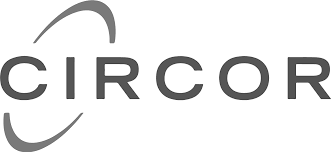Understanding the Financial Perspective of Your Balanced Scorecard
The financial perspective is a critical component of the balanced scorecard framework. It focuses on measuring and managing financial results, such as revenue, profit, and returns. By tracking these financial metrics, organizations can ensure they are on the path to achieving their strategic goals.
The Four Perspectives of the Balanced Scorecard
- Financial Perspective: Evaluates financial performance and sustainability.
- Customer Perspective: Measures strategies related to marketing, sales, and customer relationship management (CRM).
- Internal Process Perspective: Focuses on operational efficiency and effectiveness through key performance indicators (KPIs).
- Learning and Development Perspective: Emphasizes developing sustainable core competencies within the organization.
The balanced scorecard is designed to provide a comprehensive view of an organization’s performance. The financial perspective acts as both a guiding star and a scoreboard for tracking the success achieved by implementing strategies across the other three perspectives.
Key Metrics in the Financial Perspective
To effectively monitor financial performance, the financial perspective should include key financial measures, ratios, KPIs, and metrics. While the specific metrics may depend on your organization’s unique strategies and goals, there are two essential categories that should always be included:
- Business Growth: Metrics focused on revenue growth and expansion.
- Productivity: Metrics relating to cost and asset management, ensuring operational efficiency.
1. Business Growth: Focusing on Expanding Your Business
The business growth category encompasses all metrics associated with developing and increasing revenue streams. These KPIs may include:
- Revenue from new customers.
- Sales generated in new markets.
- Growth from new product lines or services.
- Performance of new business units.
By honing in on these areas, organizations can better understand their growth capabilities and market potential. For even more insights, consider exploring tools available in our Small Business Growth Strategy Pack.
2. Productivity: Enhancing Operational Efficiency
The productivity metrics gauge how effective and efficient a company is in managing its operations. While business growth focuses on increasing revenue, productivity metrics are critical for assessing cost-effectiveness and resource utilization. Key productivity metrics might include:
- Asset turnover ratios.
- Inventory turnover rates.
- Revenue per employee measurements.
Improving productivity not only helps in maximizing output but also contributes significantly to profitability. Using our Productivity Time Management Strategy Pack can provide additional strategies and tools.
Aligning Financial Perspectives with Overall Strategy
The financial metrics chosen will drive strategies and tactics across the entire balanced scorecard. For instance, metrics focusing on productivity improvements will stem from insights gained in the internal process perspective, whereas business growth will be guided by customer perspectives. Understanding this alignment is essential for effective strategic planning.
Organizations must balance their management efforts between revenue growth and productivity. Businesses focusing heavily on sales growth should also incorporate productivity metrics to ensure sustainable operations.
Conclusion: Implementing Your Financial Perspective
By maintaining a strong focus on both business growth and productivity, organizations can solidify their financial foundation. Use the following action steps to enhance your balanced scorecard financial perspective:
- Identify and track key financial metrics relevant to your business strategy.
- Regularly assess growth and productivity KPIs to align with organizational goals.
- Integrate findings from financial metrics into broader strategic decision-making.
Practical Tool: Balanced Scorecard Financial Metrics Checklist
| Metric Type | Example | Frequency of Review | Actionable Insights |
|---|---|---|---|
| Business Growth | Revenue from new customers | Monthly | Adjust marketing strategies based on customer acquisition costs. |
| Productivity | Asset turnover | Quarterly | Identify inefficiencies in resource allocation. |
For a comprehensive toolkit to enhance your organizational performance, explore the Balanced Scorecard and Strategy Map Toolkit.






























